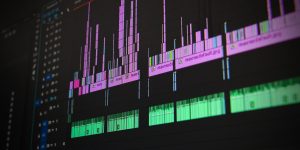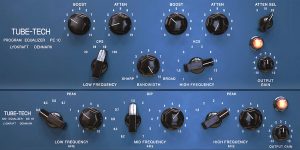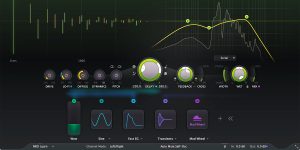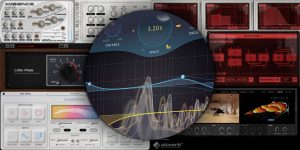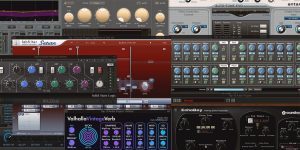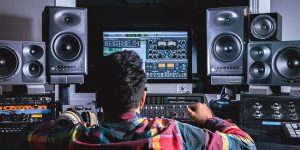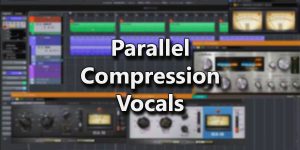Picture this: you’re working on a music production to achieve that polished and professional sound. Well, the VST compressor is your secret weapon in this quest. It plays a pivotal role in shaping the dynamics of your audio signals, ensuring a smooth and balanced sonic experience.
But what exactly is audio compression? Simply put, it’s the process of taming the wild dynamics of a sound by reducing the volume of louder parts and boosting quieter elements. This helps maintain a consistent and controlled audio level, making tracks more cohesive and listener-friendly.
Understanding audio compression
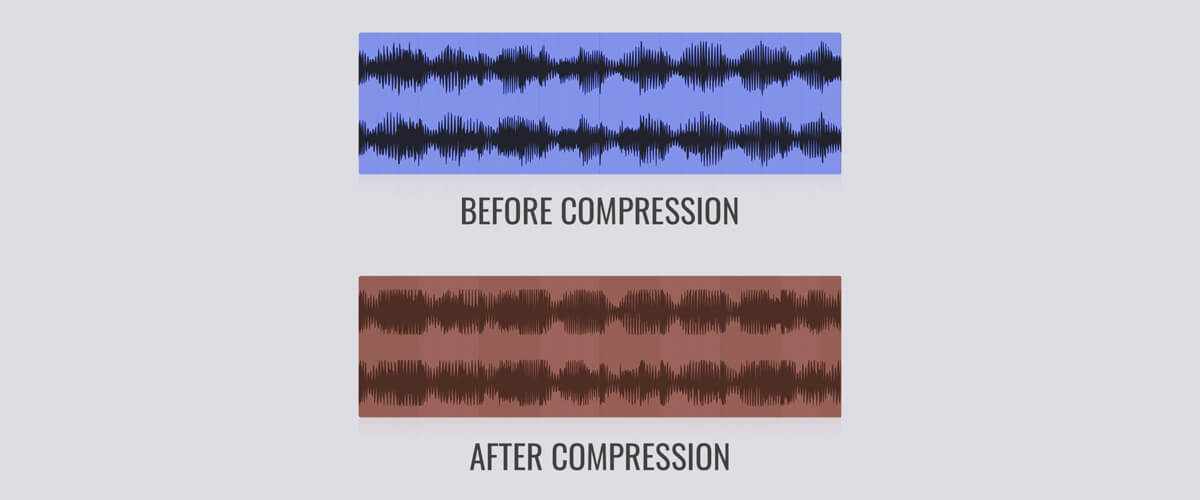
At its core, audio compression is the process of reducing the dynamic range of an audio signal. It involves controlling the volume levels by reducing the loud parts and boosting the quieter sections. This helps maintain a more consistent and balanced audio level throughout the track.
Now we know what is audio compression, but you’re wondering how to use the compressor, right? To achieve compression, several parameters come into play. First, we have the threshold, which sets the level at which the compressor starts to act. Any signal above the threshold will be affected by compression. The ratio determines the gain reduction applied to the audio signal above the threshold. Higher ratios, such as 4:1 or 8:1, will result in more intense compression.
Next, we have the attack and release settings. The attack time determines how quickly the compressor responds to signals above the threshold, while the release time determines how long it takes to stop acting once the signal falls below the threshold. These settings impact the overall feel and transient response of the compressed audio.
Additionally, there’s the makeup gain, which compensates for the volume reduction caused by compression, allowing you to restore the overall level of the signal.
The goals of compression are varied and depend on the desired outcome. One goal is to control the dynamic range, ensuring that softer elements are brought forward while louder sections are controlled, resulting in a more balanced mix. Compression can also increase sustain, making notes or sounds last longer by reducing their initial attack and extending their decay.
Furthermore, compression can add coloration and character to audio. Some compressors, like FET or tube-based ones, introduce harmonic distortion and saturation, imparting a pleasing warmth and vintage vibe to the sound.
By understanding these fundamental principles of audio compression, you gain the power to shape and enhance your music’s dynamics. So, whether it’s controlling the range, increasing sustain, or adding coloration, compression opens up a world of creative possibilities for your audio productions.
Types of audio compressors
Optical compressors

Optical compressors operate using light-sensitive components, creating a distinct signature. What sets them apart is their ability to preserve the sound’s natural dynamics while adding subtle control and finesse. In addition to their smooth and transparent compression, they often exhibit a gentle and musical quality that is highly sought after by many producers. Their slower attack times and relaxed release settings produce a more natural and organic compression sound.
While optical compressors can be used across various instruments, they particularly shine when applied to vocals. The subtle and hidden nature of optical compression allows for effective vocal control without sacrificing the nuances and dynamics of the singer’s performance. However, they can also work wonders on acoustic instruments, such as guitars, pianos, and strings, where a delicate touch is desired.
VCA Compressors

VCA compressors offer a wide range of features and functionalities, making them a staple in the audio engineer’s toolkit. What sets them apart is their exceptional precision in controlling compression parameters. With adjustable attack and release times, flexible ratio settings, and accurate metering, VCA compressors give you precise control over the dynamics of your audio.
Their versatility shines through as they adapt to instrument groups. VCA compressors excel in taming the dynamic range of drums, guitars, and other percussive instruments. They allow punchy and impactful control while maintaining the instrument’s natural character.
Whether you’re after a subtle touch or a more aggressive sound, VCA compressors empower you to sculpt and shape your audio with unparalleled precision.
FET Compressors

FET stands for Field-Effect Transistor, and these compressors possess distinct characteristics that set them apart. However, FET compressors’ ability to infuse audio with a touch of coloration and character makes them special.
One standout feature of FET compressors is their lightning-fast attack times, allowing them to respond swiftly to transients. This makes them ideal for instruments with sharp, dynamic elements like drums, guitars, and vocals, where preserving the initial impact is essential.
Moreover, FET compressors are known for imparting a pleasant and subtle saturation, adding a touch of warmth and harmonics to the audio. In addition, they give instruments a lively and vibrant character, making them popular choices for adding energy and excitement to a mix.
If you want to inject some liveliness, coloration, and a bit of vintage charm into your sound, FET compressors are your go-to tools.
Tube Compressors
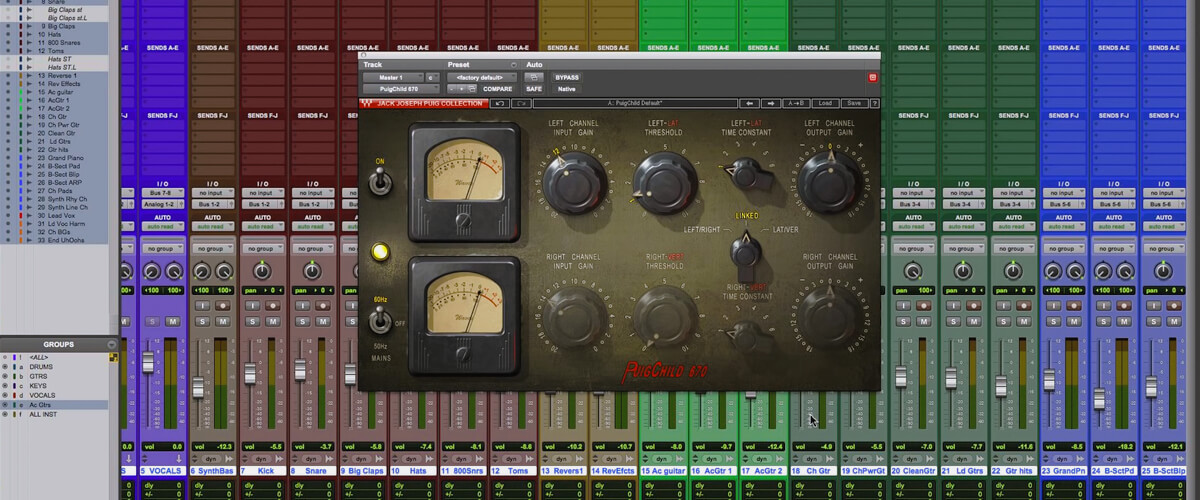
Tube compressors are renowned for their ability to impart a rich and inviting character to audio.
One of the key attributes of tube compressors is their unique harmonic distortion. The tubes within these compressors add a touch of pleasing saturation and harmonics to the audio signal. This natural distortion brings depth and character, evoking a nostalgic, analog feel.
Tube compressors add warmth and musicality to various instruments, particularly vocals, guitars, and bass. They shine while smoothing out dynamic variations while maintaining the instrument’s natural timbre. Moreover, their organic and lush compression can enhance the overall mix and give it an exquisite vintage touch.
So, if you’re yearning for that warm, classic sound with a touch of gentle distortion, turn to tube compressors.
Digital Compressors
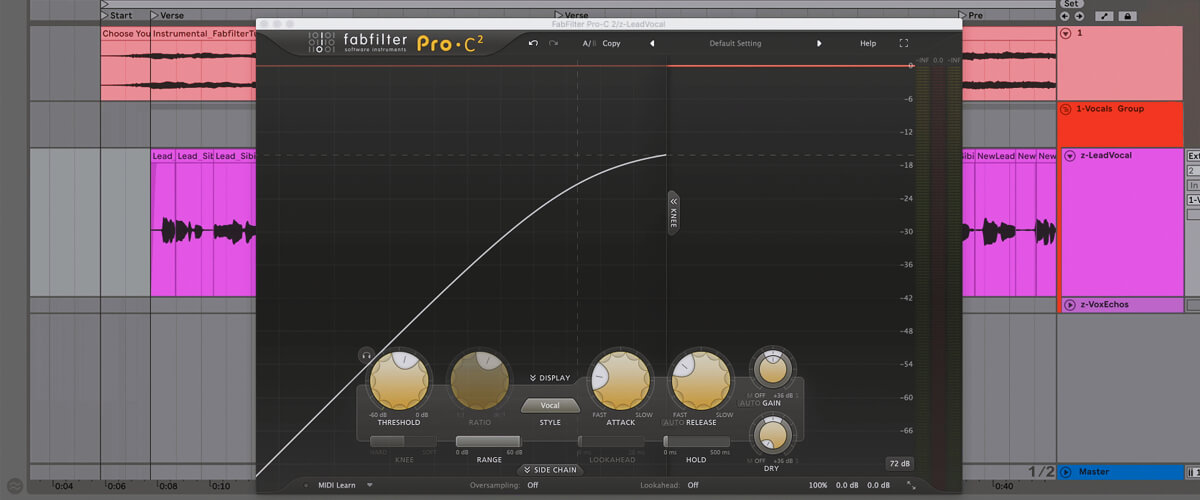
One of the major advantages of digital compressors is their remarkable precision. They provide accurate and surgical control over compression parameters, allowing for precise shaping of the audio dynamics. This level of control is particularly useful when working on intricate mixes or complex arrangements.
Digital compressors often offer a wide range of ratio settings, attack and release times, sidechain options, and advanced metering, empowering you as a producer to tailor the compression to your needs.
Moreover, digital compressors can emulate the sound of various analog compressors, offering a vast palette of possibilities.
Regarding instrument groups, digital compressors are versatile and can be used across the board. They excel in shaping the dynamics of vocals, drums, guitars, and even electronic instruments, providing transparent control while preserving the instrument’s inherent qualities.
With their precision, flexibility, and ability to emulate analog counterparts, digital compressors are an essential tool in the modern producer’s arsenal.
So that you have a clear perception of what types of audio compressors exist, in the table, I will give examples of well-known VST compressors depending on their type.
| Type of compressor | Popular VST plugins |
|---|---|
| Optical compressors | Universal Audio LA-2A, Waves CLA-2A, Softube TLA-100A, Softube CL1B |
| VCA compressors | SSL G-Master Buss Compressor, Waves SSL G-Master Buss Compressor, Cytomic The Glue, SSL Native Bus Compressor |
| FET compressors | Universal Audio 1176LN, Waves CLA-76, IK Multimedia T-RackS Black 76, Plugin Alliance Lindell 7X-500 |
| Tube compressors | UAD Fairchild Collection, Arturia TUBE-STA, Waves PuigChild Compressor |
| Digital compressors | FabFilter Pro-C 2, TDR Kotelnikov, Klanghelm DC8C |
Tips for effective compression
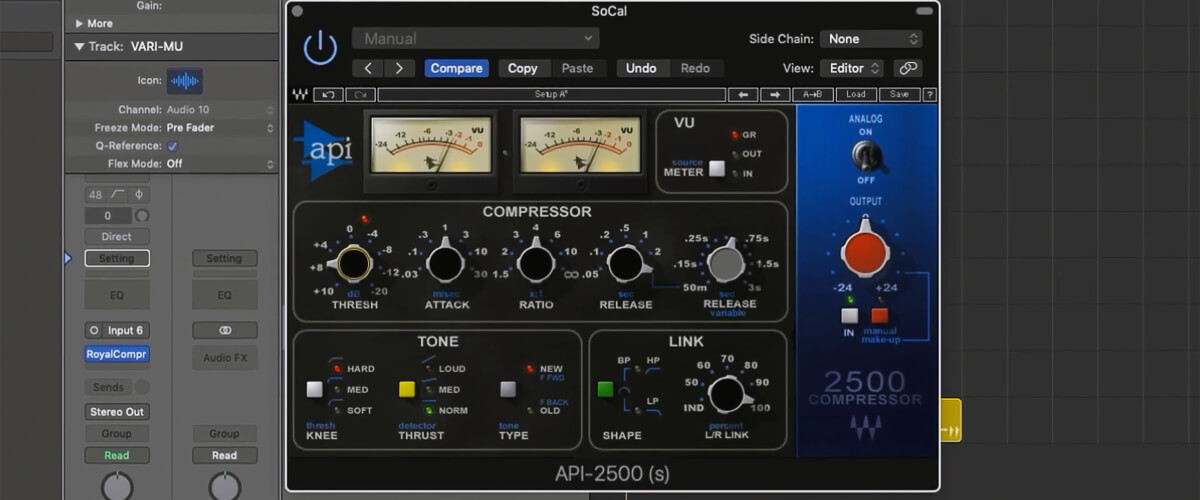
Now that we have covered the essential aspects of audio compression let’s explore some practical tips to ensure the effective use of this powerful tool. By implementing these techniques, you can take your audio productions to the next level.
Remember to recap the key points that different compressors offer unique characteristics. Optical compressors provide smooth and transparent compression, ideal for leveling out dynamic peaks. VCA compressors offer precision and versatility, allowing precise control over compression parameters. FET compressors bring fast attack times and coloration, adding character to audio. Finally, tube compressors offer warm and vintage sounds with harmonic distortion and musical saturation.
When setting attack and release times, consider the characteristics of the sound source. For instruments with sharp transients, such as drums or percussion, faster attack times can retain the initial energy. Longer release times work well for sustaining elements like vocals or guitar chords. Experiment and trust your ears to find the sweet spot.
Choosing the right compression ratio is essential. Lower ratios like 2:1 or 4:1 provide subtle compression, maintaining a more natural sound. Higher ratios, such as 8:1 or higher, create more noticeable compression, which is useful for controlling unruly dynamics. Adjust the ratio according to the desired effect and the level of control needed.
Best practices include using compression in moderation and avoiding excessive compression that may squash the dynamics and drain the life out of the music. Instead, use makeup gain to match the compressed signal’s level to the original, ensuring a consistent output volume.
Embrace experimentation and explore different types of compressors to find the ones that suit your style and preferences. Each compressor brings its unique fingerprint, so try different models and plugins to discover the ones that enhance your audio productions.
To understand and effectively use compression in practice, I processed many materials. And truth be told, no one-size-fits-all guide contains all the nuances and techniques of compression. But among many tutorials, I want to single out the “Ultimate Audio Compression Guide” course. This course helped me find a balance between control and artistic expression and use compression to shape and enhance the dynamics of my audio. So now I know how to trust my ears and plugins and let the music guide my decisions.
Armed with this knowledge, it’s time to dive in and experiment. Explore the world of compressors, try different settings, and discover the transformative power they hold. With practice and an understanding of these techniques, you’ll master the art of compression and elevate your audio productions to new heights of excellence.


